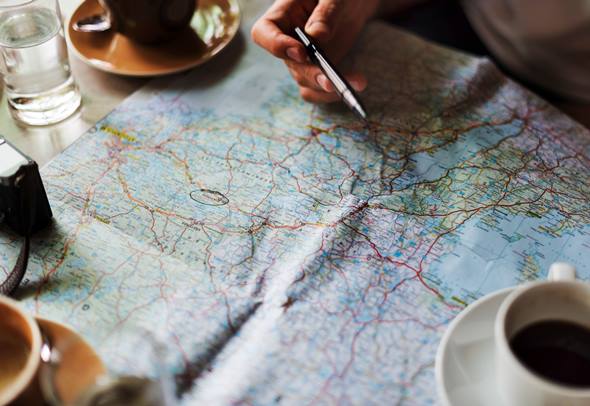
Adventure is the kind of word that pulls you out of your comfort zone and into the wild. Think snow-capped peaks, dense forests, remote islands, and open deserts. It’s thrilling, bold—and often unpredictable.
But here’s the thing: behind every Instagram-perfect summit photo, there’s a story of careful planning, survival skills, and gear that didn’t quit halfway through. Because when things go south, being unprepared is never part of the plan.
Whether you’re hiking solo, camping off-grid, or kayaking into unknown waters, here’s how to prepare for the risks while keeping your trip unforgettable—in the best way possible.
1. Know Your Terrain (and Research Like a Local)
It’s easy to get lost in photos of places. But don’t stop there. Dig into the real stuff. Check weather patterns. Know the terrain. Learn what animals live nearby and what
plants to avoid. Read trip reports from people who’ve been there recently.
Conditions change fast—especially in mountains or forests. A dry trail last week might be washed out now. And always check if permits are needed. Some parks or trails have seasonal closures or restrictions.
2. Physical Prep: Train for the Unexpected
Adventure travel isn’t a casual stroll. You might be walking uphill with a 30-pound backpack or paddling for hours in uneven water. That takes stamina—and a body that can handle the pressure.
So, start small. Hike regularly. Practice carrying your pack. Focus on leg and core strength. If you’re planning high-altitude travel, practice breathing techniques or try stair workouts. You don’t need to be an athlete, but you should be ready to keep going when your body’s tired.
3. Pack Smart: Gears That Do More Than One Job
Anyone can throw gear into a bag. But packing smart? That’s what makes a difference. Choose multi-use items. A scarf that’s also a headwrap. A bottle that doubles as a filter. A jacket that folds into a pillow. That saves space and weight.
And when it comes to tools, go for ones that won’t fail you when the stakes are high. For example, durable, field-tested items like cold steel knives are trusted by serious travelers for a reason. They blend strength, versatility, and edge retention that lasts through rain, rock, and rough handling. So, whether you’re chopping firewood, slicing rope, or handling emergencies, such dependable tools give you peace of mind without the bulk.
4. Build a Risk Kit for Self-Reliance
A risk kit is your lifeline when things turn upside down. Start with a compact first-aid set: gauze, bandages, tweezers, antiseptic, and allergy relief. Add things most people forget—like duct tape, water purification tablets, an emergency blanket, and a flashlight with extra batteries.
Want to level it up? Include a mirror for signaling, a whistle, and a mini firestarter. These don’t take much space but can make a huge difference when help is hours—or days—away.
5. Emergency Scenarios: Think Ahead, Not After
Planning for trouble isn’t negative—it’s smart. What if you get lost? What if your phone dies? What if the weather shifts without warning? Create small “if-then” plans. If you lose the trail, you’ll stop and signal. If you run low on water, you’ll use purification tabs and ration until the next stream.
You don’t need a plan for every disaster. But having a few basic steps mapped out clears your head when panic tries to creep in.
6. Double Up Where It Counts
There’s a rule outdoors: two is one, one is none. That means always carry backups of essential items. A second flashlight, an extra lighter, or a spare charging cable. If your main gear fails or gets lost, the backup keeps you moving.
Split them up, too. Keep one set in your pack and the other in your jacket. Simple idea, huge impact.
7. Leave a Digital and Physical Trail
Adventure doesn’t mean disappearing completely. Always tell someone your exact plans: where you’re going? When do you expect to return? What trail or region are you covering? Share a photo of your map or your packed gear. Update them if anything changes.
If possible, check in each day with a short text. And carry something that can send a signal if needed—like a satellite beacon or emergency GPS.
Conclusion
Adventure travel should fill your soul, not drain your spirit. Yes, it can be risky. But when you’re prepared, you turn risk into resilience. You stop reacting—and start leading your journey with awareness and confidence.
So gear up, train hard, and plan smart. The wild is waiting—but it rewards those who respect it. Let your next adventure be a story worth telling, not a lesson learned the hard way.



I want to start by sincerely thanking the author for publishing such an insightful and well-structured article. This is the type of article that makes the internet a better place.
Fantastic read! Keep up the great work—I’ll definitely be checking back for more of your insights! 🚀
excellent.